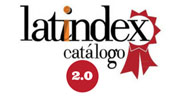Equipos biomédicos coadyuvantes para el control de la nutrición y para el ejercicio físico de personas con diabetes
DOI:
https://doi.org/10.29019/enfoqueute.v8n1.138Palabras clave:
Diabetes, equipo biomédico, nutrición, pie diabético, ejercitadorResumen
Con el fin de coadyuvar en el tratamiento de la diabetes, que es una de las principales causas de muerte en el Ecuador y en el mundo, se está desarrollando un Proyecto de Investigación para crear equipos que permitan el control y tratamiento efectivo de esta enfermedad. El equipo electrónico creado para el control de la nutrición, permite que el enfermo diabético cuente con la información sobre la cantidad de calorías que debe ingerir en consideración de sus actividades y su tratamiento médico. El equipo mecatrónico para el ejercicio físico de personas con pie diabético, permite aplicar terapias en función de la severidad de la afectación, considerando lo delicado y complejo que puede ser dicho tratamiento, para así, aliviar su malestar, disminuir el tiempo de recuperación, y en algunos casos incluso evitar la amputación. El equipo biomédico para el control de la nutrición ha sido completamente terminado; mientras que el equipo para el tratamiento del pie diabético se encuentra en etapas de desarrollo de prototipos y pruebas. Los dos equipos han sido concebidos y desarrollados con rigurosos métodos de ingeniería bajo estándares de calidad, por lo cual constituyen un aporte importante a la investigación, desarrollo de ciencia, tecnología e innovación.
Descargas
Referencias
García Yanes, J. (2009). Tesis Doctoral. Relación entre el índice glucémico, carga glucémica y fibra con la resistencia a la insulina en la población canaria. Tenerife, España.
IDF. (19 de Octubre de 2015). International Diabetes Federation. Obtenido de http://www.idf.org/who-we-are
INEC. (27 de Octubre de 2014). Instituto Nacional de Estadística y Censos. Obtenido de http://www.ecuadorencifras.gob.ec/institucional/home/
Jesús, F. R. (2010). Pie Diabetico Atencion Integral. Mexico,D.F: Mc Graw Hill.
Joslin. (10 de Julio de 2016). Diabetes and nutrition. Obtenido de http://www.joslin.org/info/how_does_fiber_affect_blood_glucose_levels.html
Lineaysalud. (2009). Obtenido de http://www.lineaysalud.com/que-es/metabolismo-basal
Proctor, J. E. (2007). Diabetes Mellitus. Barcelona: Lippincott Williams Wilkins.
Villarino. (09 de Octubre de 2016). Sociedad Española de Dietética y Ciencias de la Alimentación. Obtenido de http://www.nutricion.org/publicaciones/pdf/antropometria/METABOLISMO%20ENERGETICO.VILLARINO.pdf
WHO, & FAO. (2003). Diet, nutrition and the prevention of chronic diseases. WHO Technical report series 916, 1-160.
Publicado
Número
Sección
Licencia
Los autores retienen todos sus derechos (© copyright).
- Los autores retienen sus derechos de marca y patente, y también sobre cualquier proceso o procedimiento descrito en el artículo.
- Los autores retienen el derecho de compartir, copiar, distribuir, ejecutar y comunicar públicamente el artículo publicado en Enfoque UTE (por ejemplo, colocarlo en un repositorio institucional o publicarlo en un libro), siempre que se dé el reconocimiento de su publicación inicial en la revista Enfoque UTE.
- Los autores retienen el derecho a hacer una posterior publicación de su trabajo, de utilizar el artículo o cualquier parte de aquel (por ejemplo: una compilación de sus trabajos, notas para conferencias, tesis, o para un libro), siempre que indiquen la fuente de publicación (autores del trabajo, revista, volumen, número y fecha).
























